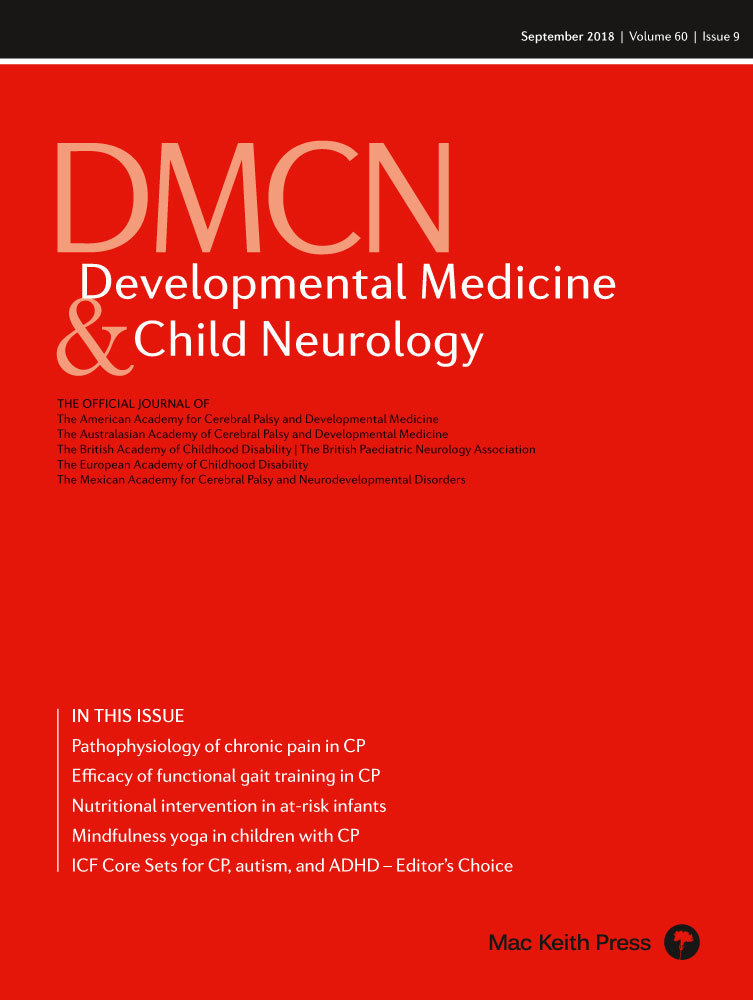The primary care pediatrician: key to improving neuromotor outcomes
These are unprecedented times for children with neuromuscular conditions and their families. In December 2016, the US Food and Drug Administration approved nusinersen, the first treatment for children and adults with spinal muscular atrophy (SMA). The European Medicines Agency quickly followed. Nusinersen alters the splicing of the SMN2 gene (pre-mRNA), increasing the production of the functional survival motor neuron protein that is deficient in patients with SMA. Phase II trials in infants with SMA type I and older children with SMA type II and III demonstrate improvements in motor function and ventilator-free survival compared to sham-controlled or natural history cohorts.1, 2 Gene therapy trials are also underway with results to date demonstrating significant benefits in infants with SMA type I.3 The early diagnosis of SMA is now critical as earlier treatment appears to lead to improved outcomes. Similarly, earlier diagnosis and therapy for children with cerebral palsy (CP) improves outcomes by harnessing the neuroplasticity of the young brain.4
Because of the importance of early diagnosis, the partnership between primary care providers and those specialists who evaluate and treat children with delays in motor development is more critical than ever. Developmental screening and surveillance are considered core tasks of well-child care, but many primary care providers lack confidence in their ability to accurately detect neurodevelopmental delays and do not want to worry parents unnecessarily. When there is a recognized concern for SMA or other motor disorders, pediatricians should refer patients simultaneously for diagnosis and early intervention, as a firm etiological diagnosis is not necessary to start these services. Access to specialty evaluations can be challenging, so a broad network of consultants may be necessary to obtain a rapid evaluation. Establishing hospital or clinic-wide algorithms to prompt an immediate evaluation of an infant who presents with hypotonia and weakness without encephalopathy may lead to an earlier diagnosis of SMA. Primary care providers should also initiate early referral of a child who has a delay in walking without delays in other streams of development, as it may represent SMA type II.
Even before the approval of nusinersen, children with SMA were surviving longer with the early initiation of enteral feeding in those with feeding difficulties, non-invasive ventilation in those with restrictive lung disease, and better airway clearance with assisted cough machines. In 2017, a multidisciplinary panel of experts published updated guidelines for the care of all types of SMA5 which should serve as a reference to all who provide care for this group of infants and children.
The American Academy of Pediatrics, an organization of 66 000 primary care pediatricians, pediatric medical subspecialists, and pediatric surgical specialists dedicated to the health, safety, and well-being of infants, children, adolescents, and young adults have several groups working to improve the care of children with special needs, including the Council on Children with Disabilities and the Section on Developmental and Behavioral Pediatrics. These groups have created educational tools for the primary care pediatrician to improve their ability to detect and manage motor disorders such as CP, and can serve as additional resources for children with SMA.
It is an inspiring time to provide care for infants and children with SMA. While we have guarded optimism, we are watching the course of this disease change through adherence to clinical care guidelines and the initiation of novel treatments. An ongoing partnership between primary care providers, developmental specialists, and neuromuscular providers should lead to the earlier diagnosis and initiation of treatment with the goal of improved outcomes for infants and children with SMA, CP, and other motor disorders.




